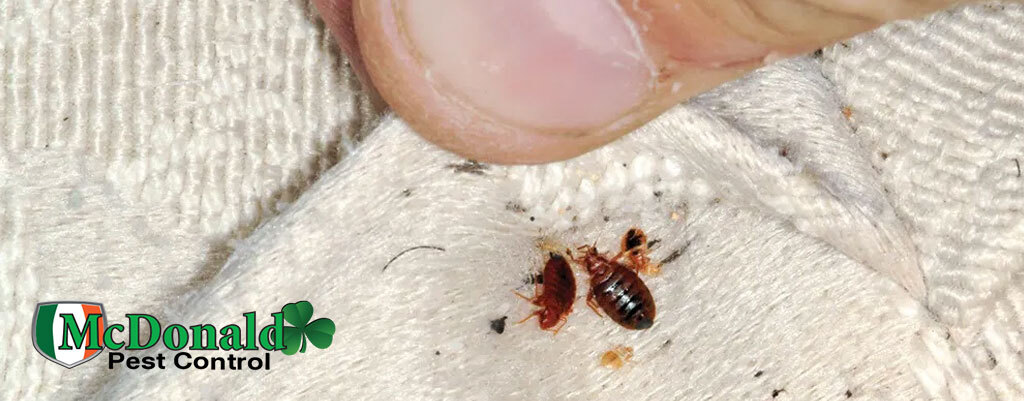How to Identify Bed Bug Bites and Prevent Future Infestations
How to Identify Bed Bug Bites and Prevent Future Infestations
Blog Article
Check Out the Various Kinds of Pest and Their Treatment Alternatives for Effective Administration
The administration of bugs in both agricultural and property setups necessitates an extensive understanding of the different kinds that can invade these atmospheres, as well as the therapy alternatives offered for reliable control. From family rodents that present wellness risks to garden insects that threaten plant yields, each category requires a tailored method. Comprehending the subtleties of parasite behavior and the corresponding remedies is essential; however, the question stays: what are the most reliable methods that not only address existing invasions yet additionally avoid future incidents?

Usual Household Vermin
Although family bugs can vary dramatically in type and behavior, several share common characteristics that make them an annoyance. Typical home pests include rodents such as computer mice and rats, bugs like roaches and ants, and occasional intruders such as spiders and flies. These pests usually thrive in settings that give very easy accessibility to water, food, and sanctuary, making homes especially at risk.
Rats, for circumstances, are notorious for triggering structural damages and spreading condition. Insects like roaches are not only disturbing however can likewise trigger allergic reactions and bronchial asthma in sensitive people.
Effective bug administration begins with avoidance, which consists of sealing entrance factors, preserving sanitation, and making use of ideal storage techniques for food. Understanding the practices and attributes of these usual household parasites is vital for reliable monitoring and preserving a healthy living atmosphere.
Garden Insects and Their Influence
Yard insects pose a considerable danger to the wellness and efficiency of plants, with some price quotes suggesting that they can create up to 40% of plant losses in particular areas. These insects, that include pests such as caterpillars, beetles, and aphids, in addition to nematodes, can cause extreme damages by eating plant tissues, leading to stunted development, reduced returns, and jeopardized high quality.
The effect of garden pests prolongs beyond mere visual worries; they can disrupt ecological communities by changing food chains, impacting pollinators, and spreading out conditions amongst plants. Insects like the crawler mite can compromise plants, making them a lot more vulnerable to fungal infections. Invasive types may outcompete indigenous flora, leading to biodiversity loss.
Integrated Insect Administration (IPM) techniques, which combine organic control, cultural methods, and targeted chemical applications, can offer sustainable options. By recognizing the particular pests and their behaviors, gardeners can carry out targeted treatments that not just secure their plants but likewise advertise a healthier garden ecological community.
Rodents: Recognition and Dangers
Rats prevail garden insects that can pose significant risks to plant health and general ecosystem stability. These small animals, including varieties such as rats, computer mice, pop over to this site and voles, are typically identified by their sharp incisor teeth and durable bodies. Their fur pigmentation differs widely, varying from grey to brown, and they normally exhibit a lengthy tail which aids in equilibrium and dexterity.
The threats associated with rodent infestations are diverse. Rats are infamous for their duty as vectors of various conditions, including hantavirus and leptospirosis, which can be transmitted to family pets and human beings.
In addition, rats can disrupt the all-natural balance of neighborhood communities by taking on indigenous wildlife for sources. Their tunneling practices can cause dirt disintegration and destabilization of plant roots. For that reason, early identification and understanding of rodent habits and risks are essential for effective pest management.
Reliable Therapy Approaches
When handling rodent invasions, employing reliable treatment approaches is vital for reducing damage and wellness dangers. Snap catches and digital catches give a gentle and fast way to get rid of rodents, important link while glue traps can aid check task levels.
Second of all, lure stations containing rodenticides can be strategically placed in locations of high rodent activity. These stations need to be tamper-resistant to ensure the safety of non-target pets and youngsters. It is vital to pick the ideal bait type, as rats can develop bait aversion if not altered periodically.
Along with traps and lure, sealing entrance points can dramatically lower the possibilities of re-infestation. This entails evaluating and repairing voids in wall surfaces, doors, and windows.
Last but not least, expert parasite control solutions can be helpful for considerable infestations. They have the experience, tools, and items required for efficient eradication and can establish a tailored management plan. By applying these therapy techniques, property owners can efficiently resolve rodent issues and safeguard their wellness and residential property.
Preventative Steps and Tips

Keeping tidiness is just as vital; make certain that food is stored in impermeable containers and immediately tidy up spills or crumbs. On a regular basis getting rid of trash and making sure that compost stacks are taken care of properly can prevent pests from being drawn in to your home.
Furthermore, take into consideration landscaping techniques that dissuade rodent habitation. Trim plants and maintain mulch away from the foundation of your property, as these can give hiding spots for insects.
Conclusion
Effective parasite management requires a detailed understanding of various insect types and their certain therapy alternatives. Inevitably, useful link a positive position on pest monitoring cultivates a healthier setting, protecting both agricultural and domestic spaces from pest-related obstacles.
Usual family bugs include rodents such as mice and rats, bugs like cockroaches and ants, and periodic intruders such as spiders and flies.Rodents are usual yard insects that can present significant threats to plant wellness and total ecosystem security. Early recognition and understanding of rodent behaviors and risks are crucial for reliable pest management.
Effective bug administration begins long prior to a problem occurs, with aggressive steps that can significantly lower the likelihood of rodent access and habitation.Reliable bug management necessitates an extensive understanding of different parasite kinds and their specific therapy options.
Report this page